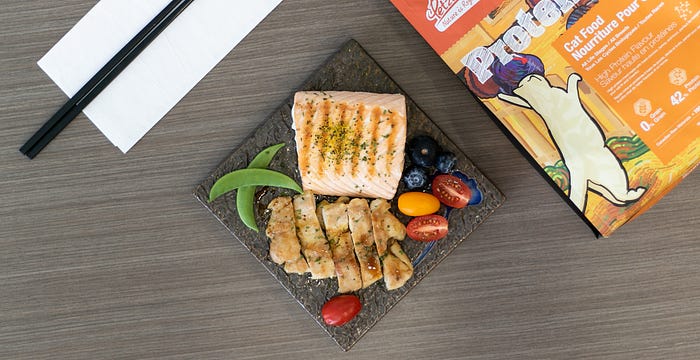Since becoming a cat owner, I have been searching for the right way to feed my cat, always centering on the ultimate question: “How many feeding times a day is appropriate for a cat?”.
From a human perspective, it’s perfectly normal to have three main meals a day, with the occasional afternoon tea, snack or late-night snack. Should cat feeding be the same? Or do you let them eat whenever they want to?
I’ve seen a lot of different interpretations of this question. Some people say that cats should be fed regularly to develop good eating habits; It has also been said that cats are free-gatherers, free to eat as much as they want, when they want.
Today, let’s analyze the pros and cons of these two ways to feed a cat to determine which is the correct way to feed a cat.
- Free Feeding
Many families keep food in the cat’s bowl at all times, because cats do have free-eating habits. This is why many times after feeding the cat, it is found that the cat eats a few bites, walks away, and then plays for a while before returning to eat a few more bites.
The reason may be that cats have smaller stomachs, so they may be full after just a few mouthfuls of cat food, but because their intestines are relatively short, digestion is faster and they become hungry again quickly. This self-service feeding gives cats a greater sense of freedom.
However, there are some downsides to free-feeding.
X. Cats tend to get fat.
Although it is natural for cats to feed on their energy needs, many domestic cats are far less active, so it is only a matter of time before they become obese on a free-feeding regime.
X. Food goes bad.
Cat food that is not eaten in time, whether dry or wet, can easily breed bacteria and cause spoilage, which can lead to illness over time.
X. Not suitable for multi-cat families.
If there is more than one cat in the house, or even a dog or other pet, free-feeding may result in one pet eating significantly more, while the other is left hungry.
2. Regular feeding
This is the most common way for working families. After all, the owner can only feed the cat at home in the morning and evening. Under this condition, the cat usually eats 2 to 3 meals a day, namely once in the morning and then has another meal before going to bed, to prevent the cat from getting hungry too early in the morning and affecting the rest of the owner.
However, this does not align with cats’ natural free-eating habits.
Second, for cats in special periods, such as fast growing cats, or elderly cats prone to disease, regular feeding does not provide enough nutrition for cats.
A combination of the two methods?
Perhaps the best approach is a combination of the two methods. The shoveling officers can give the cat wet food every morning and evening, similar to regular feeding and dry food during the day as a free feeding approach. They can also use the automatic feeder during the day, observe the food intake of each small cat, and adjust the dispenser as necessary to meet your cats’ needs.
Ultimately, using a combination of the two approaches is both best for the owner and the cat. It allows you to follow the cat’s naturally habitual eating cycle, while also accommodating to the owner’s schedule.
Additionally, dry and wet food with each other is also a healthier way to feed.
It can be a staple food pot + traditional dry food, or it could be a staple food pot + frozen dry food, rather than a single category of feeding. This will provide rich nutrition, but also hydrate your cat.
The last thing to remember is that, although there is no need to count the calories you’re feeding your cat, you should still be mindful of their lifestyle. Factors such as their size, exercise habits and health should be considered when determining how much and how often you should be feeding them. It all comes down to how much you feed them, and how you choose their food.

Find the ideal cat food for your cat, check out Petzlove Official Website
